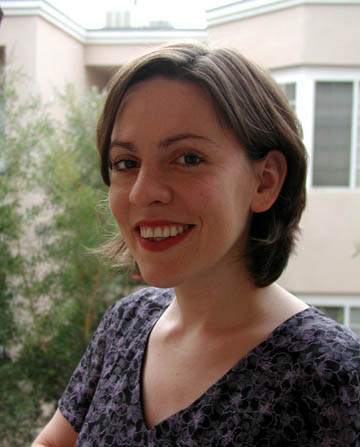|
Web Exclusives: Alumni Spotlight
Posted December 18, 2002: There was once a girl named Margaret K. Gray who wanted to be a writer. This is the story of how her wish came true. One day when she was in eighth grade, Margaret was cast as Cinderella in the class musical — a Cinderella with braces on her teeth. To prepare, the teacher asked each student to write background material for their character. Margaret thought about Cinderella, beautiful fairy tale princesses, and the fact that she couldn't see herself in princess mode, especially after she mixed up two lines during the performance, singing "Impossible! For a plain yellow pumpkin and a prince to join in marriage!" when she should have sung, "Impossible! For a plain yellow pumpkin to become a golden carriage!" What, Margaret wondered, if a princess was born ugly? Would it turn a kingdom upside down? Would anyone recognize her inner beauty? She started a story. Years passed. Margaret grew up. Her real parents were like those in the storybooks — the good kind — who nurtured her fledgling efforts to write, especially her father, Paul Gray, who taught at Princeton University for seven years before becoming a writer and book reviewer at Time magazine (he recently retired). She read and read, especially writers like Frances Hodgson Burnett and Jane Austen, who created a world she could lose herself in while reading their books. When it came time, Margaret went to Princeton University. College, she decided, was a time to try things rather than build a career. She majored in English and delighted in all the subjects and professors who opened literary worlds to her: Victorian poetry with James Richardson, Chaucer with John V. Fleming, non-fiction writing with John McPhee. She mingled these with courses in psychology, religion and Arabic. All that information poured into her brain and fed her writing. She won the 1991 senior thesis prize in Creative Writing for her book of mostly autobiographical poems, "Inscriptions." Maybe poetry wasn't practical, but it was fun and she gained a lot of experience in writing and revising a book. Then, as often happens, life presented some twists and turns. Margaret still wanted to be a writer, she just didn't know what she wanted to write. A Fulbright Fellowship brought her to Cairo, Egypt to study more Arabic, followed by a master's in fine arts in dramaturgy and dramatic criticism at Yale, then a second master's in fiction writing at Johns Hopkins University. It was in a genre writing class at Johns Hopkins that the story of the ugly princess surfaced again. One week's assignment was to write a children's story. Margaret went home that weekend. Her mother was doing what real and fairy tale mothers often do — cleaning — and asked if a certain box in Margaret's room might not be trashed. Margaret opened the box and found her eighth grade story. With a little spit and polish, the ugly princess story was ready for class. A second story of a wise fool was added in for good measure. The response from her classmates was the most positive she received all that year. But Margaret shelved the story again. She married a Princeton classmate, Harry Mittleman '91. She became an editor of publications for the Los Angeles County Museum of Art. She woke up one day and realized that she was having trouble with her job because she really wanted to be a writer, not an editor. So Margaret unearthed the story of the ugly princess and the wise fool and sent it to five children's book publishers on her own. She received four rejections almost immediately. She had almost given up hope when... A fairy godmother editor named Reka Simonsen sent her an email. Her manuscript had been rejected BUT, if Margaret was willing to rewrite it and incorporate some editorial advice (read magic words), perhaps there was a chance her story might turn into a book. So Margaret did just what her editor suggested. She read other young adult writers like Gail Carson Levine and Donna Jo Napoli. She reworked the draft to make her ugly princess more independent and less cynical. She had fun dreaming up names like Asphalt and Concrete for the ugly princess's beautiful sisters, and dubbed the prince Parsley of the Kingdom of Herb as a humorous nod to Parsifal. She even gave her heroine enchanted hair that styles itself on demand. She reimagined what it might be like for an adolescent girl to wake up one morning and find her dream of beauty granted, only to discover it made her miserable. She created a wise fool best friend and a scatterbrained fairy godmother to help her heroine sort through the mess. She wrapped words of wisdom in wit and offbeat humor for 9- to 12-year olds to enjoy. And wouldn't you know, the story has a happy ending. Margaret's
first book, The Ugly Princess and the Wise Fool, was published in
October by Henry Holt and Company. She's busy on a prequel, in between
caring for her own princess, who is far from ugly, a one-year-old
daughter named Hannah. "The day I got the news that my story
would be published was the best day of my life, second to the day
my daughter was born," Margaret says. She hopes to write many
more books in the future, which for her is a wonderful way to live
happily ever after. By Maria LoBiondo Maria LoBiondo is a freelance writer in Princeton.
|
||

